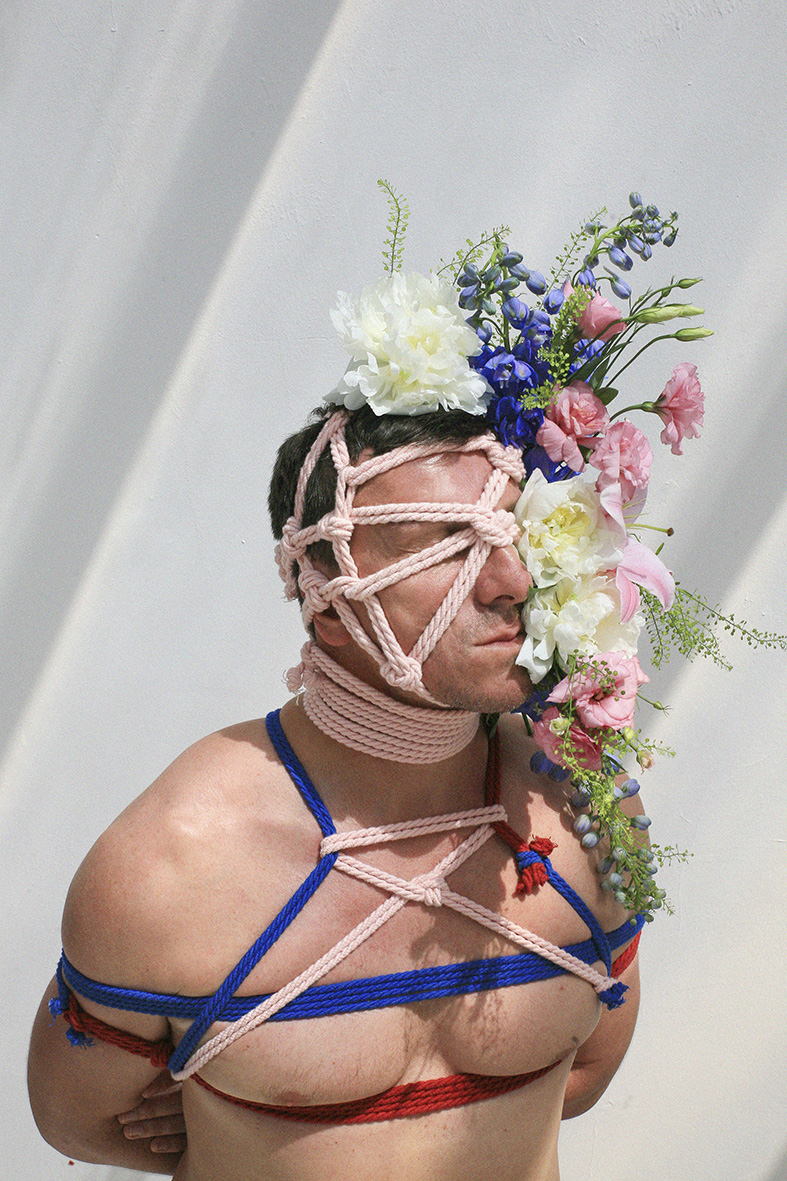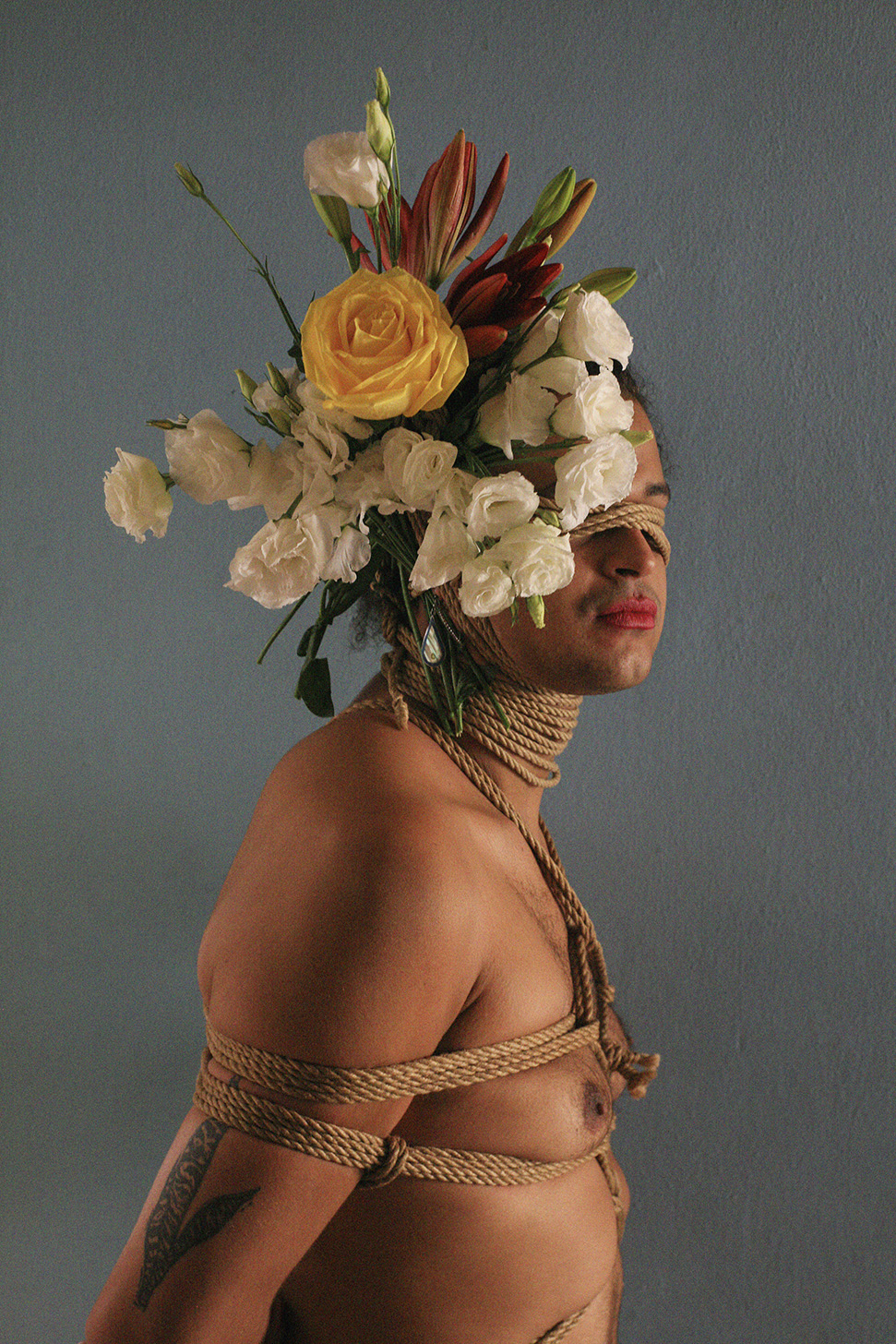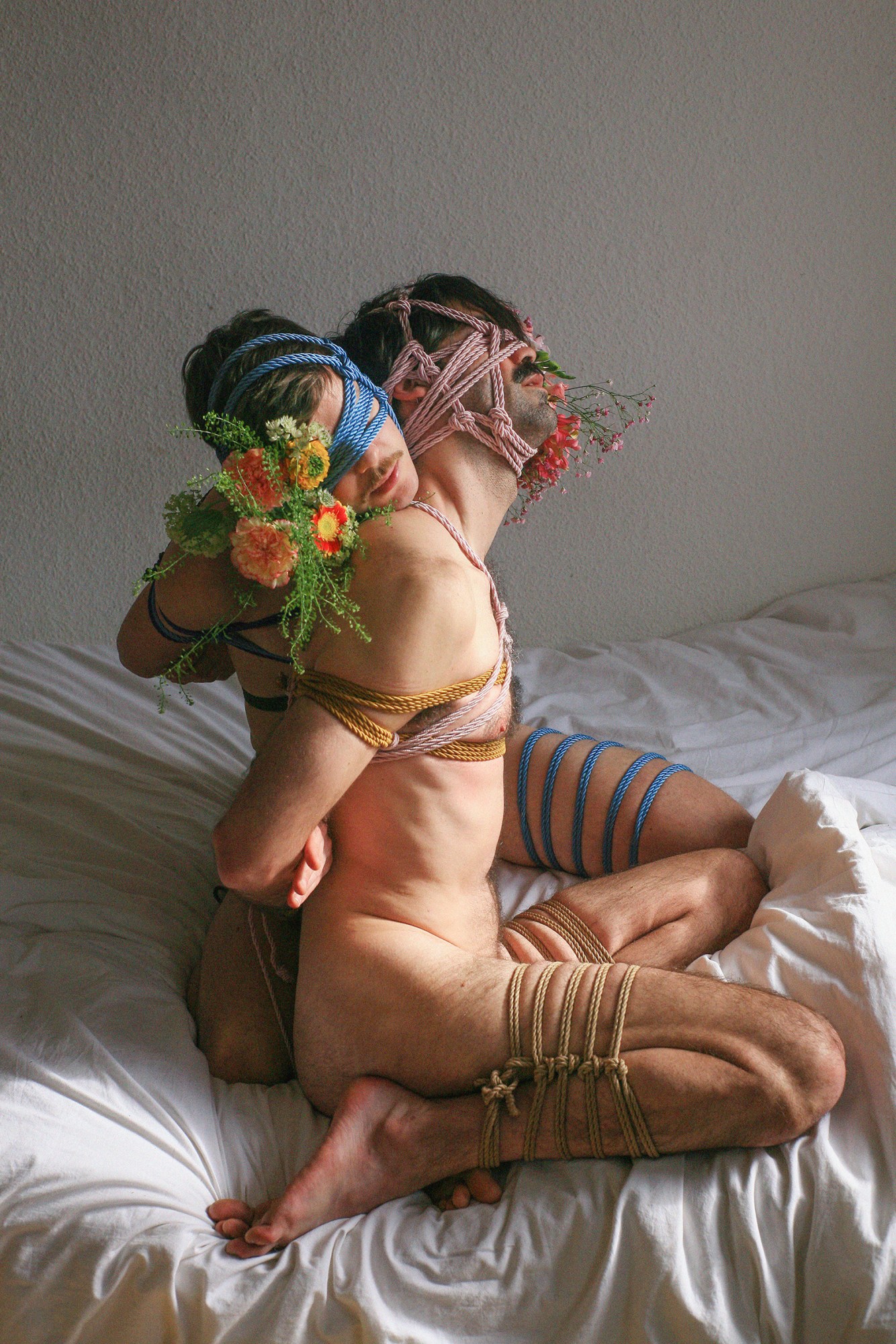Where queerness is the antithesis of heteronormativity, and BDSM is a subversion of conventional sexuality, is it then possible to subvert the already subversive?
Fabio DaMotta is an artist answering this question, breathing softness into BDSM to broaden our understanding of fetishism, believing it can be both intense and poetic. Fabio is also subverting the idea that bondage is only something used for submission: it can be liberating, shedding light on the oppressed queer body.
Born in the south of Brazil, Fabio moved to São Paulo when he was 19 to study Graphic Design and Photography. From college, he went on to work for Erika Palomino — the renowned Brazilian fashion journalist and previous Editor-in-Chief of L’Officiel Brazil — who he describes affectionately as “the hottest fashion editor” around. “I was going out every night to photograph amazing cultural happenings in Sāo Paulo, like fashion week and all the good parties,” he says. “The underground scene helped me figure out who I am.”

But since 2004, Fabio has pursued his own work. Seeking to demystify fetish through the use of shibari — a style of Japanese bondage which works with simple yet visually intricate patterns of knots — Fabio’s photography is both poetic and intense. When asked when he first came into contact with BDSM, Fabio explains he discovered it in his romantic relationships, which often have a kinky, dominant side. The notion to use it as a form of art came when he was working for a queer magazine: “I had this idea for a fetish photo shoot. We hired a shibari master, and I was mesmerised by his beautiful work. I fell in love with the art of the clean knots and shapes of shibari.”
Fabio’s work is just as much a political act as it is art, subverting the idea of BDSM and opening it up to further interpretation. “I like to twist the idea of what bondage can be and step away from the cliche colours,” he says. “I try something with a different approach. That’s where my art is.” He does this through juxtaposing tied up nude bodies with soft colours and flowers, allowing people to see that BDSM is more than just erotic, it can be elegant too.

Aside from subverting BDSM, Fabio also aims to liberate the queer body. By using nude queer people in his work, he is “going against the traditional Catholic beliefs that the Brazilian society is based on.” The imagery is “bringing to light all the issues that the current administration likes to hide in the shadows,” protesting that “being a gay artist in Brazil right now is an act of rebellion.”
In the last year, this has felt like a particular act of defiance. Under far-right president Jair Bolsonaro, a self-declared homophobe, much of Brazil’s LGBT+ community feel incredibly vulnerable and with little state protection. Between cancelling state investment in a queer TV series, discouraging gay tourism and criticising the Supreme Court’s decision to criminalise homophobia, Bolsonaro’s government turned the clock back on progress for LGBT+ civil rights in Brazil.

The domino effect of the current administration can be felt throughout the country, something Fabio has noticed while touring his bondage shows. “When I’m travelling to other parts of the country, I see more closeted people, and under this administration, it’s become harder and more dangerous being a queer person in Brazil,” he says. “Unfortunately, as long as I can remember, this is the worst time to be gay in Brazil after the ending of the military dictatorship in 1985.”
Fabio is currently working on his third self published art book, BRA ZINE, where he travels around Brazil photographing bondage sessions with people he meets on Instagram or Grindr. He is also working on a short documentary called Motta, which follows the artist on his European tour of bondage performances. “My work took me to unexpected places. I like to roll with it because it worked for me before, I let it take me instead of having crazy plans,” he says finally. “I hope to do more bondage tours to countries I haven’t been before and make books about it — as long as Instagram doesn’t report me.”

Credits
All images courtesy Fabio DaMotta
